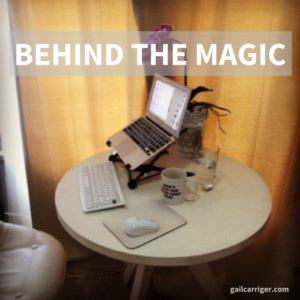Gentle Reader, is some insight into the research behind Prudence’s first fateful adventure.

While I was writing this first installment in the Custard Protocol series, I did a lot of research and jotted down a number of things about India in 1895 that didn’t make it into the book.
I also collected some fun inspirational images. I thought you would enjoy a glimpse into what wasn’t used…
Alternate Meets History Notes
- After the mutiny of 1858 the East India Company’s rule in India was replaced by the Crown.
- In my world the SAD treaty is enacted at this time. Rue will come up against this treaty in her journey, so I will not explain further here.
- The crown set up a Viceroy and a Secretary of State for India with an advisory council of 15 people. 50% of whom lived in India for 10+ years, 8 nominated by the Crown, 7 by the Company.
- Troop transport in 1902 from Southampton to Bombay took 21 days. Floating was a much easier way to get there, but couldn’t be used to transport vast numbers of troops and equipment.
- Bombay is the oldest of the Presidencies. It became part of the UK in a dowry when Catherine of Braganza married Charles II.
- Bombay had an excellent natural harbor, but was not well placed for trade with China.
- The hinterland was (and mostly remained) dominated by fierce Marathas. Very warlike. Some Maratha women still wear saris caught up between their legs to reflect the days when they fought alongside the menfolk. Excellent horsewomen: sword and matchlock.
- Steam liner travel in 1840 opened Bombay up as a port via the Suez and railway made it accessible to the rest of India.
- 1859 one solder writes: “Bombay is the worse station in India, nothing to do here save die.” (There was a major military hospital at Deolali.)
- By 1880 Bombay is a communication hub.
- I had intended to have Primrose have a flirtation with one of the locals. Much to Rue and Percy’s very imperialistic shock and horror. Unfortunately, it didn’t work for this plot line. Here is a section I clipped to inspire Prim’s adoration (from a letter home by a young Victorian lady abroad regarding the tempting masculinity around her).
“… grand-looking men, generally tall and brawny, with high cheek-bones and gold rings in their ears. They are more of a walnut than a mahogany brown and many of them are not much darker that a dark Englishman; they are the most masculine looking creatures I have ever seen and, oddly enough, their earrings and the straight petticoat they wear reaching their ankles makes them look more masculine still, as they accentuate their bold faces and their stride. For looks they beat any race of men I have ever seen, especially when they are clean shaved. I really must stop this rigmarole now…”
~ rapturous letter from Violet Jacob, a Scotswoman married to an Irish officer in the 20th Hussars, writing from Mhow 1895 impressed with the Punjabi soldiers, as quoted by Holmes.
- At the end of the 19th century the Indian silver rupee went into a gold exchange standard at a fixed rate of 1 rupee to one shilling and fourpence in British currency, or 15 rupees to 1 pound sterling.
- Here are some of my spreadsheet notes on cost comparisons then and now. This is the kind of thing I do for fun. I wanted to see how expensive it might be to live in India in the style of an upper class Victorian family, with all the ridiculous grandeur that entailed.
- I kind of got obsessed with the money conversion issue and spent too much time trying to calculate it out to better understand what was going on. I never used any of this in the book, but I learned a great deal.
 |
| British_Indian_Empire_1909_Imperial_Gazetteer_of_India |
- Skulduggery in Bengal – Assistant Superintendent of Dehra Dun in the North Western Provinces, and his dishonest conduct – recommendation of his dismissal from the Bengal Civil Service, 1876
- The Old Foodie goes to India from some recipes involving coconut.
- My favorite is the Calcutta, Receipt for Curry. “A teaspoonful of turmeric, a tablespoonful of coriander-seed, a tablespoonful of poppy-seed, half a teaspoonful of ginger, a quarter of a teaspoonful of red chilli, half a teaspoonful of cumin-seed, all well pounded; mix the powder with three ounces of butter, and fry it with two sliced onions for ten minutes. Cut up a young fowl; put it into the pan, and simmer for a quarter of an hour; add the milk of one cocoa-nut and a salt-spoonful of salt, stir well, and simmer a quarter of an hour longer; stir in the juice of half a lime or a lemon, and serve, with plain boiled rice in a separate dish.” ~ Cre-Fydd’s family fare (London, 1864)
I think that too much more and I would be giving things away about the book. But I am hoping these bits and bobs were enjoyable.
Want more behind the scenes sneak peeks? Join the Chirrup
GAIL’S DAILY DOSE
Your Infusion of Cute . . .
 |
| Lilliput My Sunbeam |
Quote of the Day:
“I watched in wonderment as all stone and a half of Signor thumped into the Marshal’s lap and tea-cozied up, purring even louder.”
~ Karen Memory by Elizabeth Bear
Tags: PRUDENCE, Victorian Culture

Haha, *of course* the Scottish woman would be especially attracted to males in, as she calls them, 'petticoats' (dhoti?)… the poor dear was probably feeling deprived of men in kilts after having married into an Irish family.